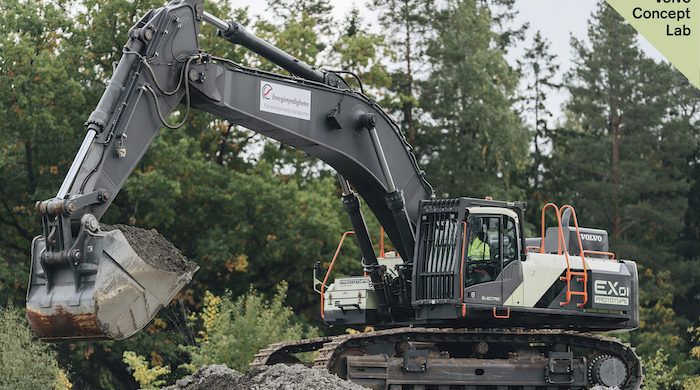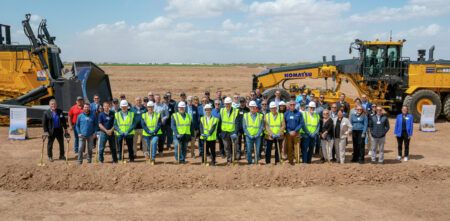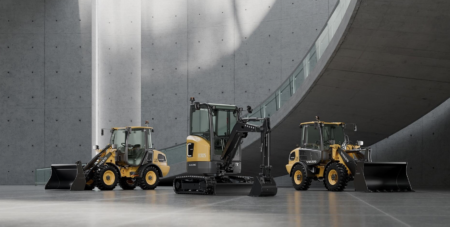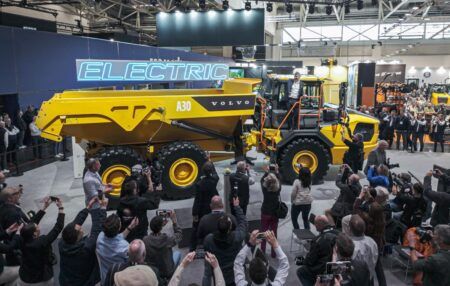Volvo Construction Equipment has revealed details of its newly-developed cable-connected excavator.
Work on producing the dual-powered EX1 prototype has been ongoing since October 2015 and will be completed in time for a research project the company is carrying out later this year on reducing carbon emissions in the quarry and aggregates industry by up to 95%.
A Volvo EC750 is the base machine for the prototype but has been modified to include an electric motor. The 70-ton machine, when able to draw electric power from an external source, will have zero-emission capabilities in addition to the diesel power from the onboard internal combustion engine.
“To fit the new components in the machine without increasing its size required a significant amount of repackaging work,” says Uwe Müller, Volvo CE’s chief project manager for the electric site project.
“However, in terms of the operator interface and controls, nothing has changed – it’s operated in exactly the same way as a conventional Volvo excavator. If the cable is connected, the machine will automatically start in electric mode. If it’s not, it will start in diesel mode.”
Other vehicles involved
In addition to the EX1, the 10-week research project will incorporate a fleet of eight HX2 prototype vehicles and the company’s LX1 hybrid wheel loader.
Later this year, at a quarry in western Sweden, Skanska Sweden will incorporate the machines into its operations, testing the practicalities of relying on electric power on-site.
Müller says, “Most of the time, the EX1 will be stationary. Its job will be to load blasted rock into the mobile crusher before it’s transported to the secondary crusher and then processed. The EX1 and the mobile crusher will work together, only moving a few meters once or twice a day as the excavator works its way through the blasted rock. Because the machine will be relatively static, it’s ideally suited as a fully electric machine on a cable. This has allowed us to make it a zero-emission excavator when it’s plugged into the grid. However, we’ve designed it with flexibility in mind, so it’s been built as a dual-powered machine. Therefore, we have the option of using the diesel engine when it’s needed, for example, to reposition the machine or quickly move it prior to blasting.”





